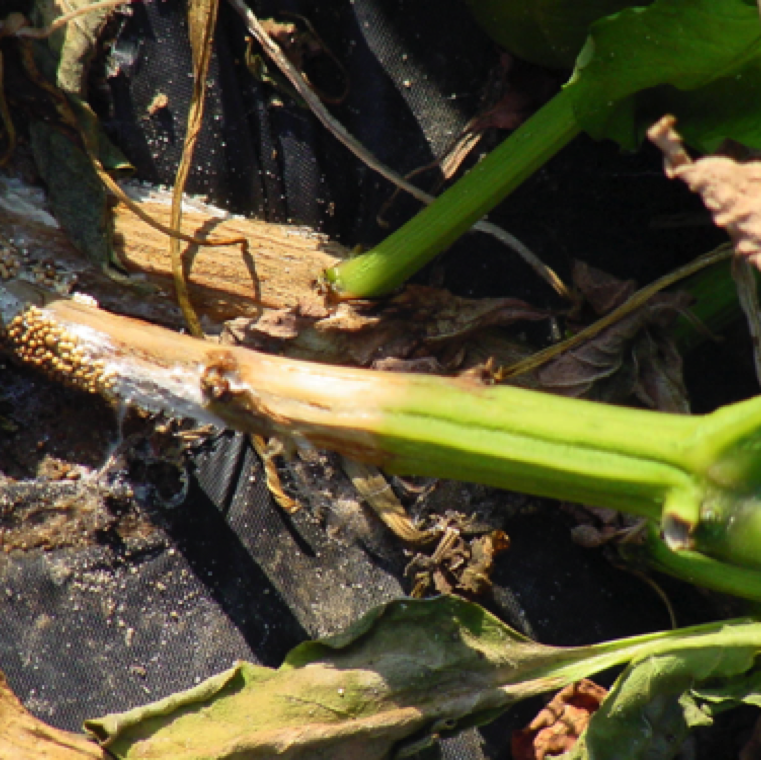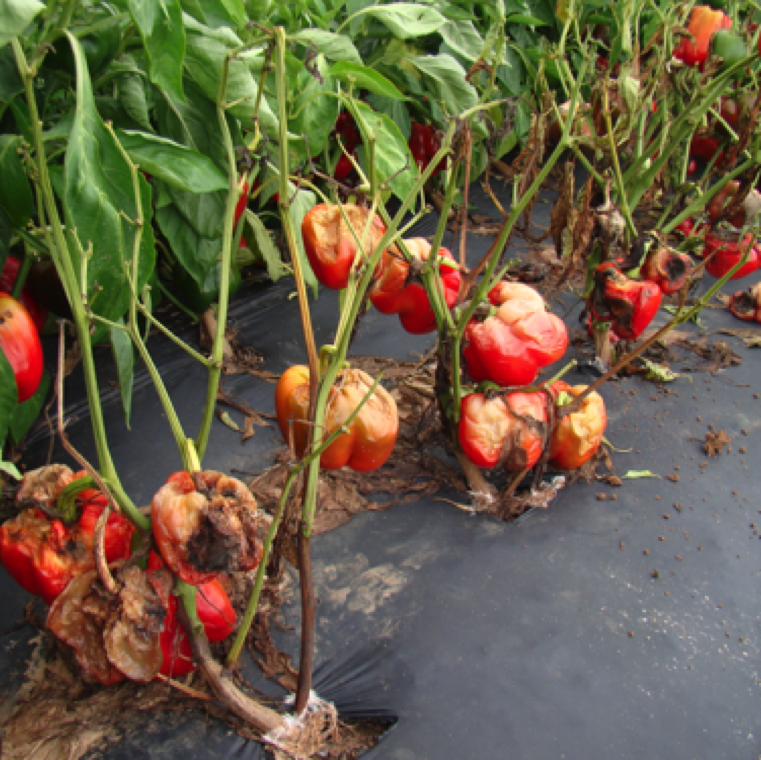

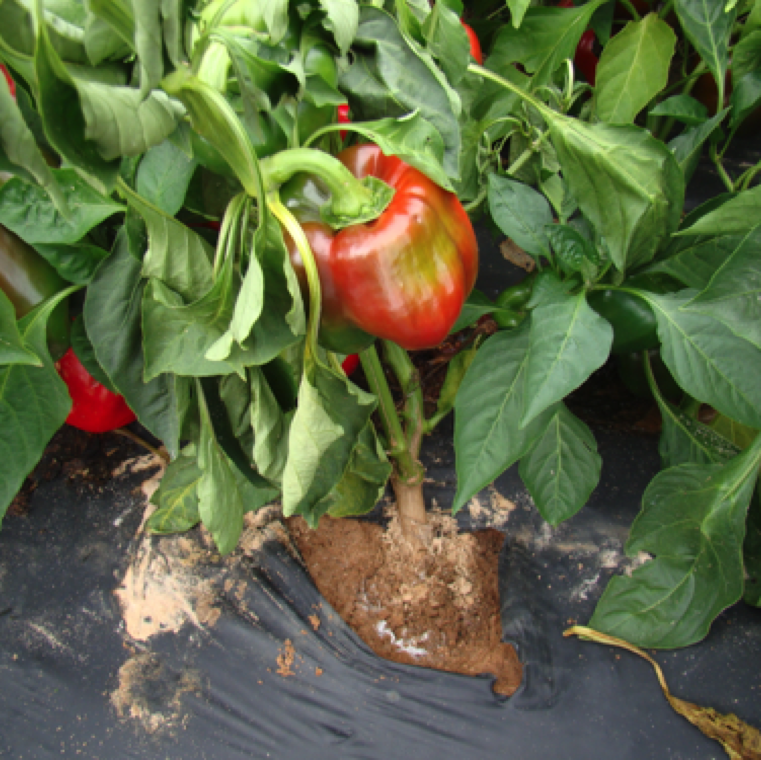
Southern blight symptoms are typically seen in warm, humid conditions. The first symptom is the wilting of the the plant. At the collar region of the stem you may notice a brown blighted section.
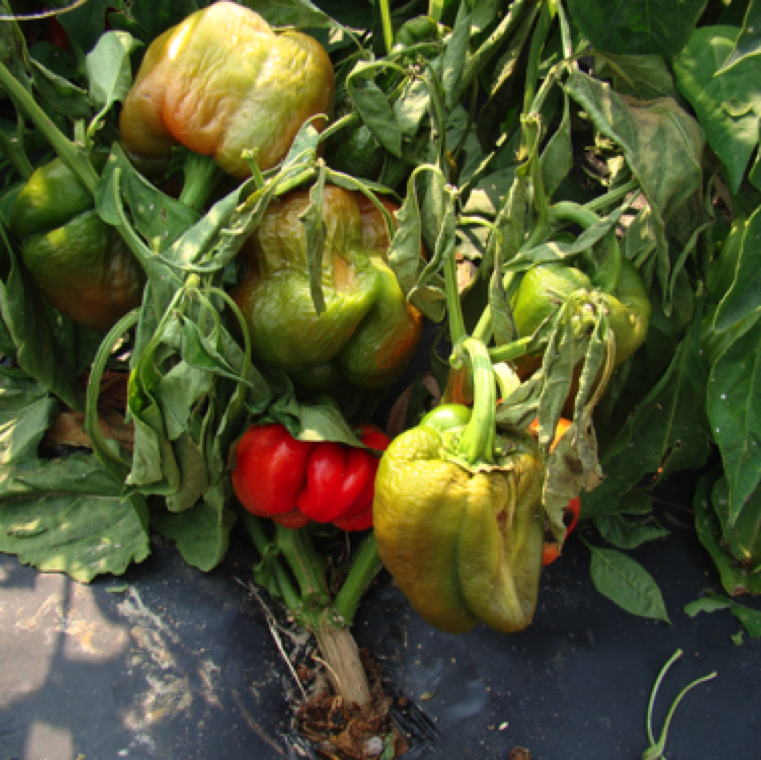
As the disease progresses the plant will continue to wilt and leaves will eventually turn brown. Because the canopy is being destroyed fruit will become more susceptible to sunscalding.
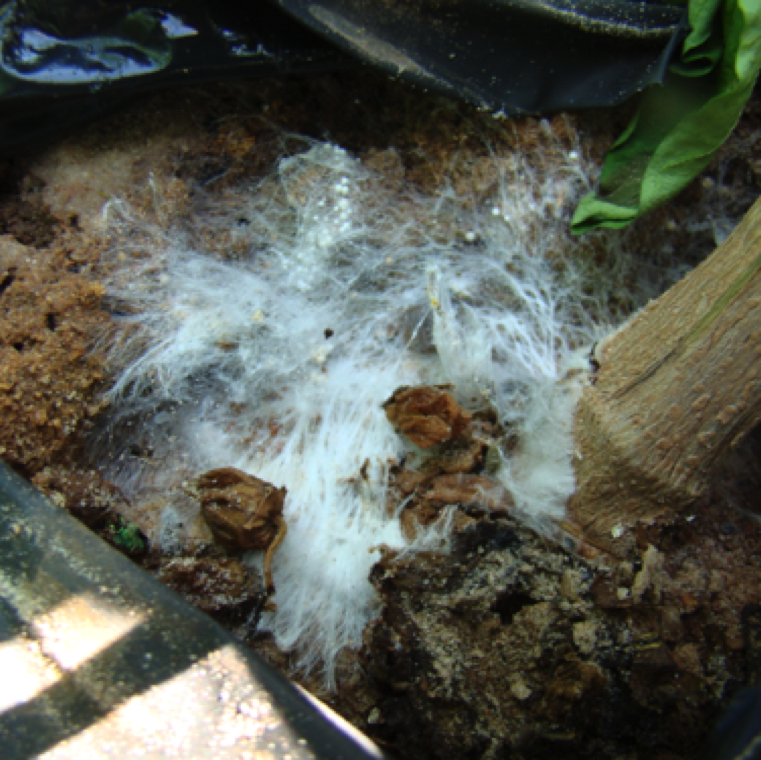
The fungal pathogen can often be seen growing as a white mycelial mat growing on the stem and the surrounding soil. The mycelia will develop sclerotia which are light tan to dark brown pathogen.
SOUTHERN BLIGHT
Fungal causal agent: Sclerotium rolfsii
Pepper diseases
